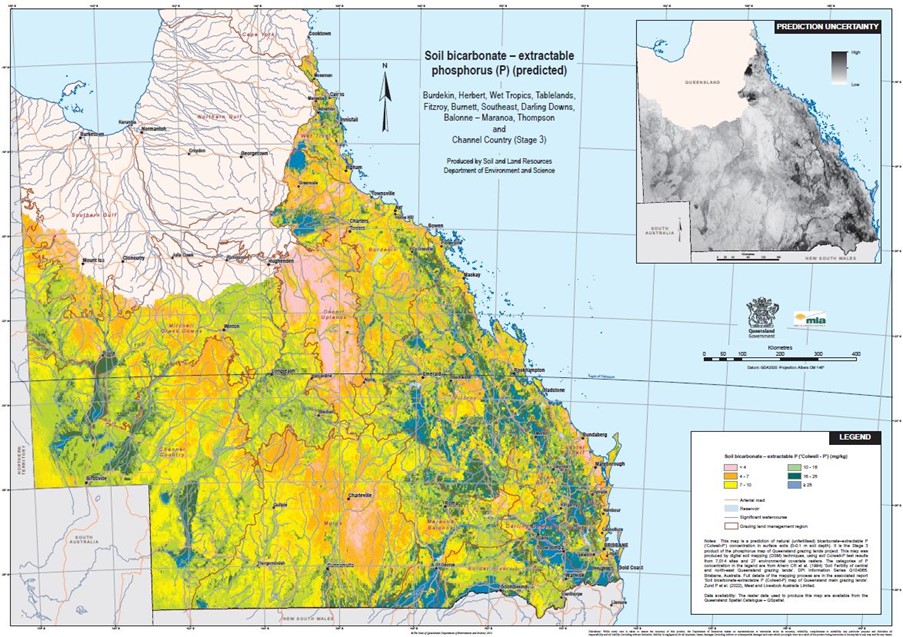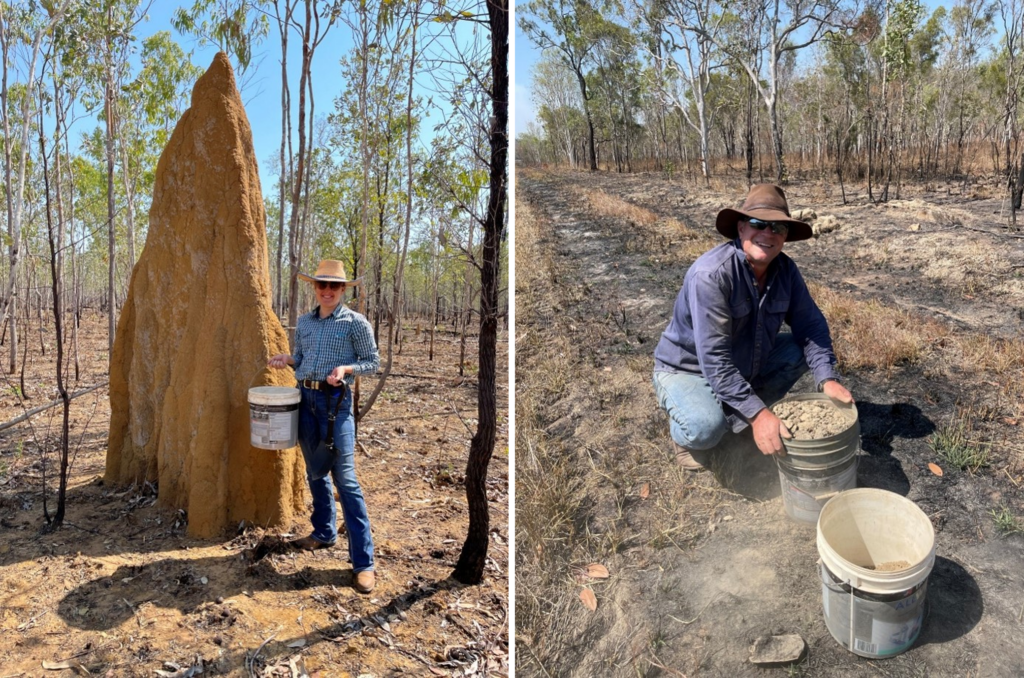Updating the Phosphorus Map of Queensland
There is a large portion of Queensland that is known to be deficient in soil phosphorus. Particularly in the north this soil deficiency means that supplementing cattle with a phosphorous lick is vital in maintaining a productive beef business. Synonymous with phosphorus (P) deficient land types, the many termite mounds that can be seen when travelling through Far North Queensland are an obvious indicator of deficiency. However, not all phosphorus deficient soils have termite mounds, therefore it can be difficult for producers to know the status of their country (deficient, marginal, or adequate) without specific testing. Understanding the P status of your property is necessary in improving the efficiency of supplementation for livestock production, fertiliser application and legume development.
The good news is there is a map currently available which shows the level of bicarbonate extractable phosphorus, also known as Colwell P, across the majority of Queensland. This map was developed using a model that predicts P using 5,812 soil samples, combined with 27 other maps developed from the NASA Shuttle Radar Topography Mission, airborne geophysical data collected during mineral exploration, satellite data and climate data from the Bureau of Meteorology.
For the areas of Queensland that have been tested, producers’ can use this map to make informed decisions about the P status of their property. The Queensland Governments site, The Long Paddock, can provide an Indicative Soil Phosphorus report using this information. This report shows a property-scale map of soil P concentration, a table that shows the indicative area and percentage of different soil P categories that are present and the uncertainty around the soil P data in the map.

The only problem is the map is missing the Southern Gulf, Northern Gulf and Cape York catchment areas, which are some of the most phosphorus deficient areas in Queensland! Mareeba, Cloncurry and Charters Towers based DAF extension staff are working to collect 200 soil samples across these regions by Christmas. These samples will be used to update the phosphorus map so that any Queensland producer can estimate the P levels on their property!
So why is it so important for producers to understand their P status? Studies have shown that supplementing with P can result in up to an 800% return on investment over 5 years. Phosphorus is an essential nutrient for cattle and is required for skeletal growth, muscle development, metabolism, and milk production. Mobilisation of P from the bones for these processes due to deficiency can lead to weak bones, breakages, and deformities. A deficiency increases the mortality rate in the herd and reduces the weaning weights of calves. The first step is knowing if your country is deficient or not and whether you need to supplement.
In areas with a marginal P deficiency, it is difficult to diagnose whether P supplementation is required unless pasture and herd management is good enough to eliminate other factors contributing to poor productivity. In these cases, blood and faecal P testing can be used in conjunction with the soil map as useful indicators of P status. This can be completed by your local DAF beef extension officer.
The more soil samples across a broad area that we can include in the modelling the more accurate information that will be available on the map for accurate decision making. If you’re in the Southern Gulf, Northern Gulf or Cape York regions and would like a soil P test completed on your property, please get in contact with the DAF extension officer near you. Make sure that you are subscribed to the FutureBeef eBulletin and are following FutureBeef on socials, so you don’t miss out on seeing the new soil P map of Queensland when it is released.
This project is funded by Meat & Livestock Australia and is a partnership with the Department of Environment and Science.
Contacts
| Northern Gulf and Cape York | Southern Gulf |
| Kacie Buchanan | Jane Evans |
| 0477 755 243 | 0436 666 290 |
| kacie.buchanan@daf.qld.gov.au | jane.evans@daf.qld.gov.au |
More information
For more information about identifying and managing phosphorus deficiency check out:
- Are you on the map? Queensland phosphorus (P) map
- Phosphorus management of beef cattle in northern Australia
- Kidman Springs study finds substantial benefits from phosphorus supplementation
- What is an Indicative Soil Phosphorus report?
